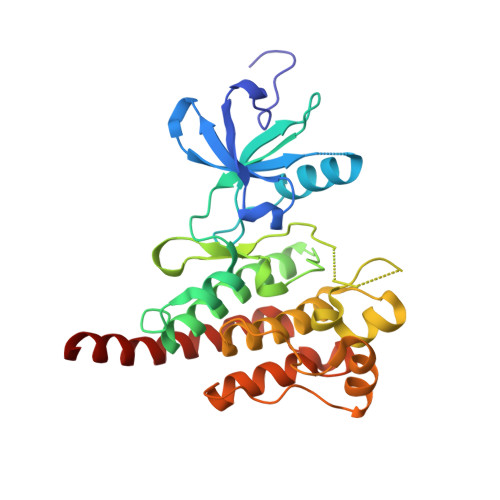Structural Mechanism of the Pan-BCR-ABL Inhibitor Ponatinib (AP24534): Lessons for Overcoming Kinase Inhibitor Resistance.
Zhou, T., Commodore, L., Huang, W.S., Wang, Y., Thomas, M., Keats, J., Xu, Q., Rivera, V.M., Shakespeare, W.C., Clackson, T., Dalgarno, D.C., Zhu, X.(2011) Chem Biol Drug Des 77: 1-11
- PubMed: 21118377
- DOI: https://doi.org/10.1111/j.1747-0285.2010.01054.x
- Primary Citation of Related Structures:
3OXZ, 3OY3 - PubMed Abstract:
The BCR-ABL inhibitor imatinib has revolutionized the treatment of chronic myeloid leukemia. However, drug resistance caused by kinase domain mutations has necessitated the development of new mutation-resistant inhibitors, most recently against the T315I gatekeeper residue mutation. Ponatinib (AP24534) inhibits both native and mutant BCR-ABL, including T315I, acting as a pan-BCR-ABL inhibitor. Here, we undertook a combined crystallographic and structure-activity relationship analysis on ponatinib to understand this unique profile. While the ethynyl linker is a key inhibitor functionality that interacts with the gatekeeper, virtually all other components of ponatinib play an essential role in its T315I inhibitory activity. The extensive network of optimized molecular contacts found in the DFG-out binding mode leads to high potency and renders binding less susceptible to disruption by single point mutations. The inhibitory mechanism exemplified by ponatinib may have broad relevance to designing inhibitors against other kinases with mutated gatekeeper residues.
Organizational Affiliation:
ARIAD Pharmaceuticals Inc., 26 Landsdowne Street, Cambridge, MA 02139, USA.















